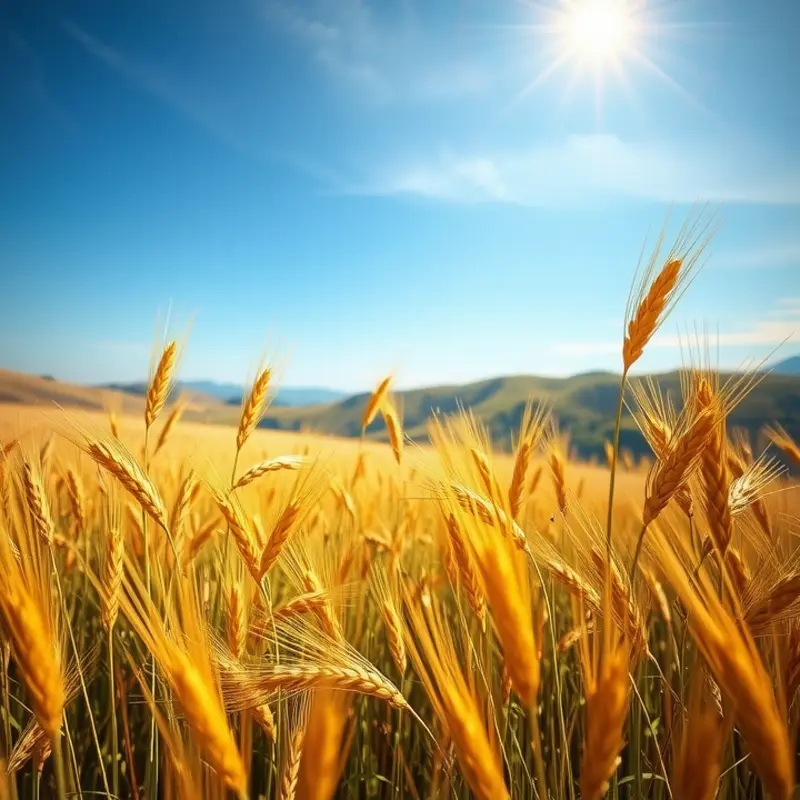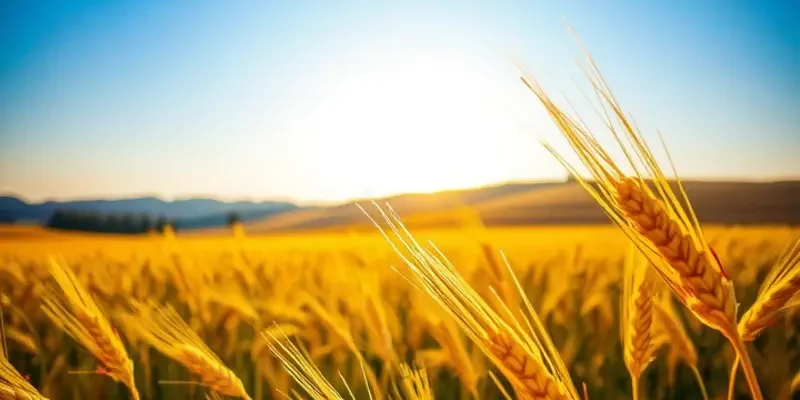From the cobblestone streets of Italy to the bustling markets of Delhi, staple grains are more than just a dietary foundation; they are cultural touchstones. These versatile seeds have shaped civilizations, influenced cuisines, and brought people together around tables worldwide. Journey through diverse culinary traditions that highlight the significance and uses of staple grains across cultures and time.
Grains of the Earth: Varieties and Cultural Significance

Wheat, rice, maize, and millet are not just nutritional staples; they are woven into the fabric of cultures across the globe. These grains have endured through the centuries, enriching human diets and securing their place in culinary traditions.
Wheat, a dominant grain in Western cuisines, is a cornerstone of bread, pasta, and an array of baked goods. It thrives in temperate climates, and its cultivation is a symbol of agricultural progress. Wheat harvest festivals, like Lammas Day in Britain, celebrate the first yield of the wheat crop with rituals highlighting its importance. Nutritionally, wheat is an excellent source of carbohydrates, dietary fiber, and essential nutrients, supporting energy needs and digestive health.
Rice, often seen as the heartbeat of Asian culinary practices, plays a central role in daily meals and ceremonial feasts alike. Whether it’s the Basmati rice of India or the sticky rice of Japan, each variety offers unique textures and flavors. In many cultures, rice is seen as a life-giving force and is present in traditions such as New Year celebrations, where it symbolizes prosperity. Rich in carbohydrates and low in fat, rice also offers a gluten-free option for those with dietary restrictions.
Maize, or corn, figures prominently in the Americas, where it is both a staple food and a cultural emblem. In Mexico, maize forms the basis of tortillas, tamales, and other beloved dishes. Festivals celebrating maize often feature colorful displays of corn in artistic forms. The grain provides essential nutrients, including B vitamins and fiber. Its versatility also extends beyond food, playing a vital role in animal feed and industrial products.
Millet, though less prominent globally, is vital in the semi-arid regions of Africa and Asia. It is known for its resilience, growing in challenging environments. Cultures that rely on millet celebrate it with festivals that emphasize communal bonds and gratitude for sustenance. Millet is a nutritional powerhouse, rich in magnesium, phosphorus, and iron, supporting bone health and energy metabolism.
Each of these grains contributes to the identity and culinary landscape of the regions where they are cherished. Through dishes infused with local flavors and age-old recipes, they narrate the history and aspirations of communities. Moreover, the rituals linked to their harvest and consumption underscore their significance beyond mere nourishment.
For an exploration of how grains are integral to culinary influences and trade, consider reading about the culinary influences of trade, which further illuminates their global journey and impact.
These grains, while feeding billions, also encompass the essence of what it means to be part of a shared global heritage. By appreciating their role in culture and nutrition, we foster connections to our past and a healthier future.
Culinary Creations: Recipes from Around the Globe

Embark on a journey through the world of staple grains, where each grain transforms into culinary delights brimming with cultural identity and flavors. Begin in Italy, where Arborio rice stands at the heart of creamy risottos. The secret lies in its starch content, which, when slowly simmered with broth, yields the silky texture synonymous with this North Italian staple. Additions of porcini mushrooms or a sprinkle of saffron can reflect regional twists, creating a texture-rich dish that varies from city to city.
Travel south to the enchanting landscape of South Asia, where basmati rice becomes the canvas for the tapestry of biryani. This aromatic dish is a culmination of spices—cumin, cardamom, and cloves—infused during cooking to create an intoxicating aroma. Each layer tells a story, from the marinated meats to fragrant rice, often topped with fried onions and fresh herbs. Despite variations across the region, whether Hyderabadi or Kolkata style, the essence of biryani remains a celebration of spices and grain.
Cross the ocean to Mexico, where corn transforms into the quintessential tortilla. Crafted with masa harina, the dough is gently pressed and cooked on a comal until it achieves the perfect balance of pliability and crunch. These tortillas serve as the base for an endless array of dishes, from tacos to enchiladas, each a testament to the versatility of corn in Mexican culinary tradition. The making of tortillas is often a communal activity, highlighting the deep cultural roots entwined with corn cultivation.
In each of these regions, grains not only provide nourishment but also convey cultural significance. Whether you are stirring a rich risotto or layering a fragrant biryani, the key lies in understanding the unique properties of the grain involved. Try sourcing local varieties when possible to enhance both the texture and flavor profiles of your dishes.
Gain further insights on cooking techniques and sustainable practices that will transform your approach to grain-based dishes by exploring eco-smart kitchen storage. Reliable storage methods can help maintain the quality and taste of grains, allowing you a sustainable and flavorful culinary experience.
Through this exploration, expand your gastronomic repertoire by celebrating the diversity and adaptability of grains. A deeper appreciation for these staple foods can inspire innovative and flavorful creations in your own kitchen, enriching your culinary journey one grain at a time.
Final words
Staple grains are more than mere sustenance; they are the very essence of the culinary traditions that shape our world. Each grain tells a story of history, culture, and innovation. As we’ve traversed through the fields of wheat and the kitchens of diverse cultures, we see how grains are not only food but connectors of people and traditions. The next time you enjoy a bowl of rice or a slice of bread, reflect on the rich tapestry of life woven around these humble staples, and maybe even try a new grain in your next culinary adventure.








